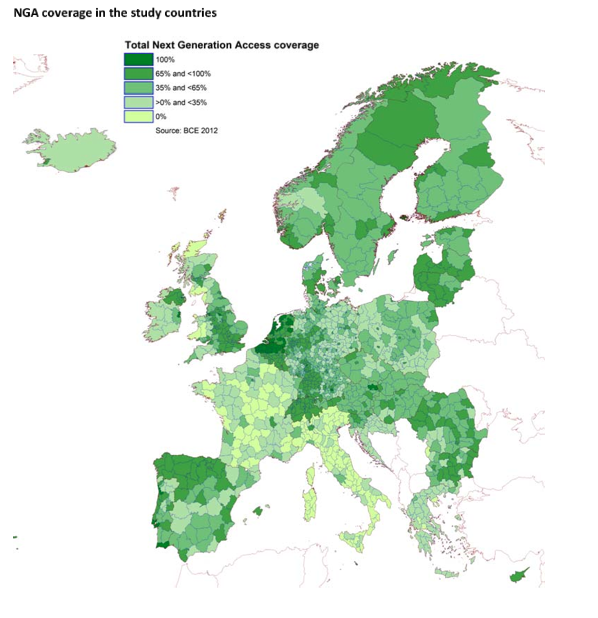Broadband in Europe
The European Commission has published recently an interesting survey of the deployment of broadband access technologies in Europe. The analysis is part of the Commission’s Digital Agenda that aims at enabling home users to have speeds of 30 Mbps or more. Technologies like ADSL and cable modems are widely deployed in Europe and more than 95% of European households can subscribe to fixed broadband networks.
The report provides lots of data about the different technologies and countries. Some of the figures are worth being highlighted. A first interesting figure is the distribution of the different advanced access technologies. Satellite is widely available given its large footprint. DSL is also widely available, but less in rural areas. The newer technologies like VDSL, FTTP, WiMAX, LTE and DOCSIS3 cable start to appear.

Broadband coverage in Europe, source Study on broadband coverage 2012
For the standard fixed broadband network technologies, the top three in terms of coverage is Netherlands, Malta and Belgium. It remains simpler to largely deploy broadband in small countries. For the next generation broadband access, the same three countries remain at the top except that Malta has better coverage than the Netherlands. For rural regions, Luxemburg is the best country in terms of coverage.

The coverage map of next generation broadband coverage shows that some countries are much better covered than others. There is still work to be done by network operators to deploy advanced technologies to meet the 30 Mbps expectation of the Digital agenda.